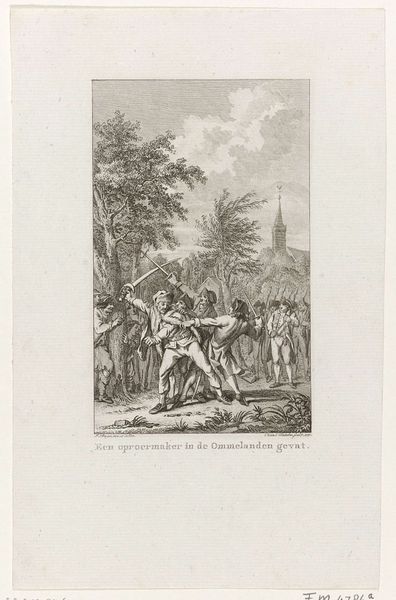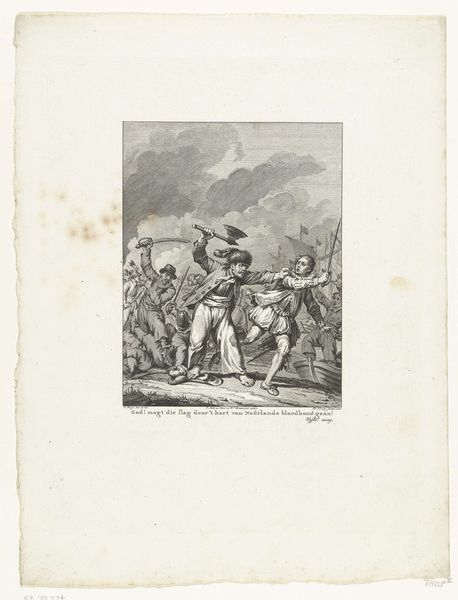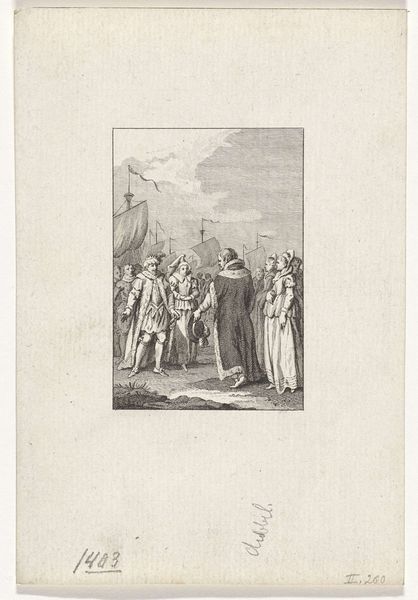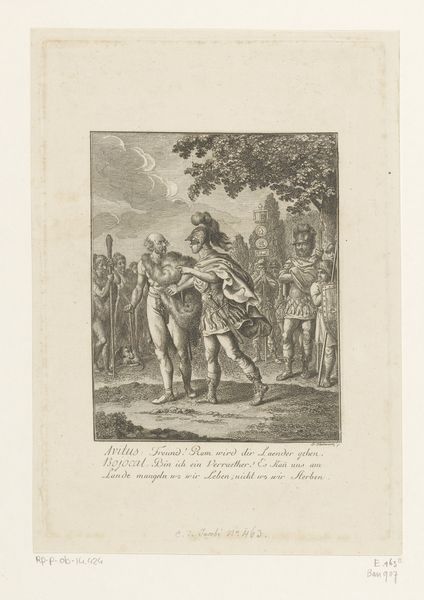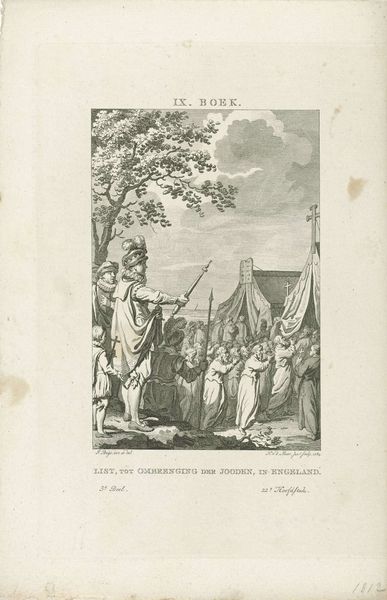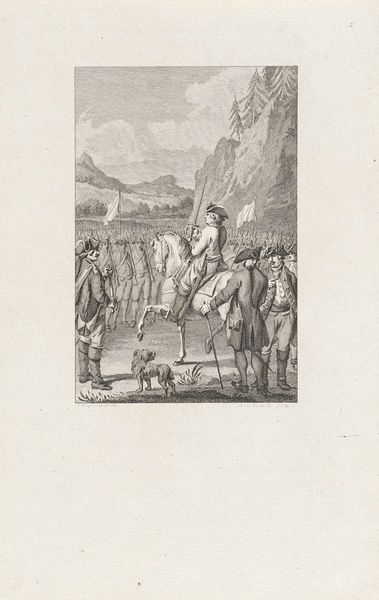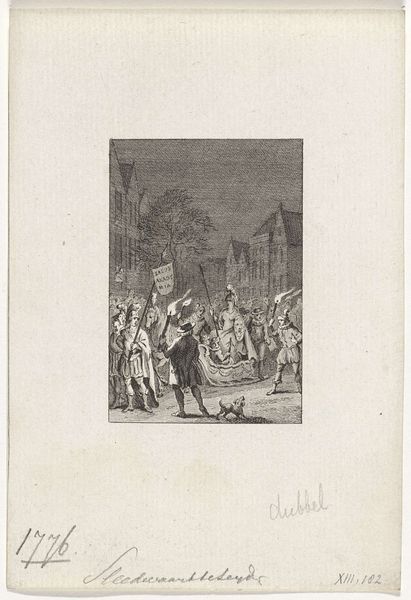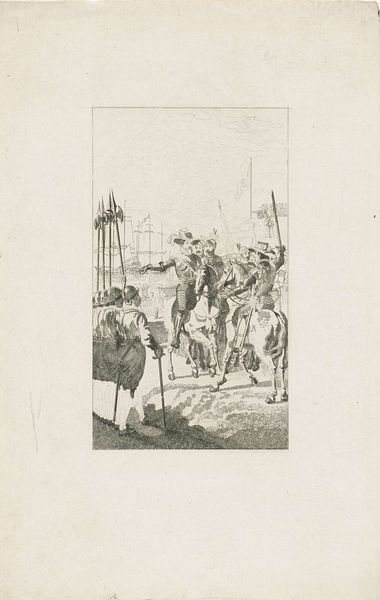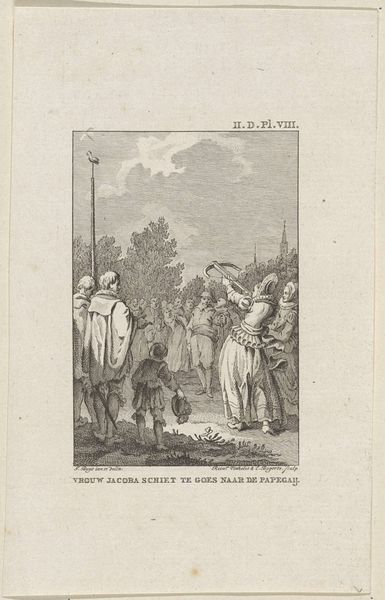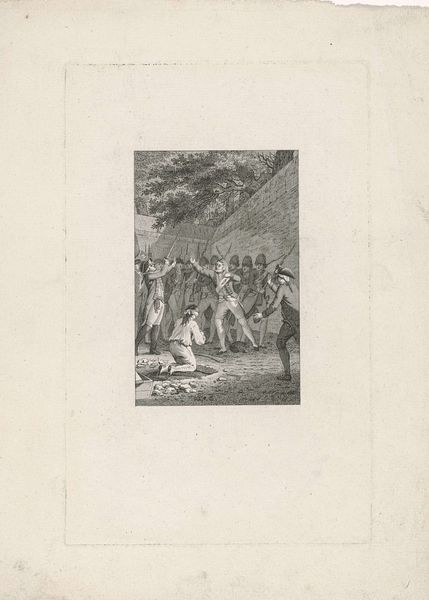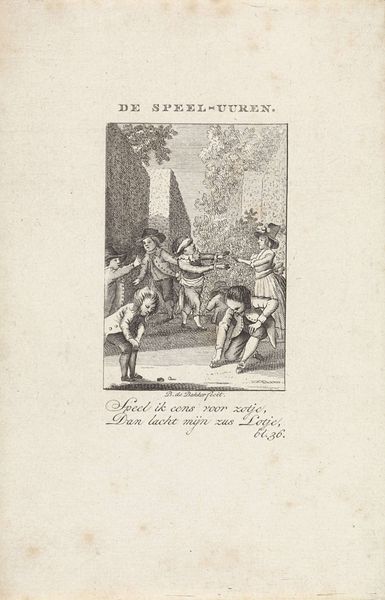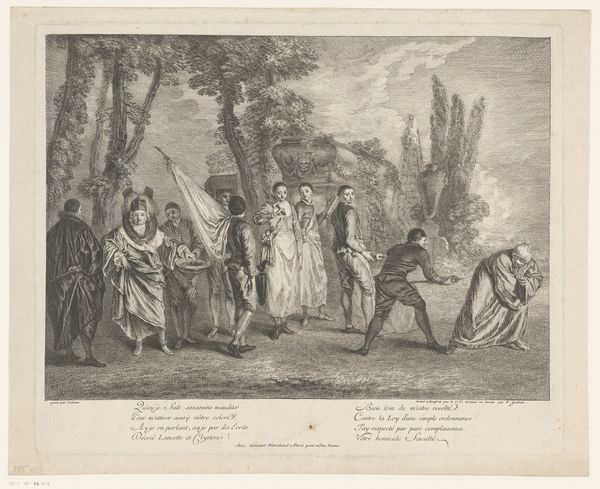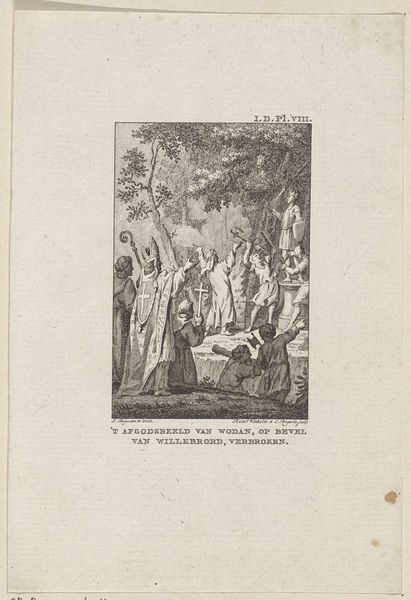
Intrede van de Franse ambassadeur de markies de Bonnac te Delft, 1753 1783 - 1795
0:00
0:00
Dimensions: height 160 mm, width 100 mm
Copyright: Rijks Museum: Open Domain
Curator: This engraving by Reinier Vinkeles, made between 1783 and 1795, depicts "The Entrance of the French Ambassador, the Marquis de Bonnac, into Delft in 1753." It's currently held at the Rijksmuseum. Editor: Immediately I sense a formality, a stiffness almost, but perhaps appropriate given the historical context. It has this airy, eighteenth-century theatricality. What strikes you first? Curator: Well, I'm drawn to the technical skill evident in the engraving. Vinkeles manages to convey a sense of depth and detail despite the limitations of the medium. Look at the layering of the cityscape elements. I want to consider the material implications of printmaking during this era and its connection to disseminating ideas about power and diplomacy. Editor: You are right. It also hints at that older master’s obsession with light. The procession, although quite proper, has this luminous presence to it, not necessarily holy, but definitely important and awe-inspiring, particularly the detail with the figures, a sort of spotlight on them from the coach. Curator: Precisely! This event served as a key moment for both countries involved. By committing it to a print, Vinkeles effectively froze it in time. Making the moment accessible for a broader audience. Who commissioned the print is critical for grasping it too. This adds layers of understanding about its cultural significance, and speaks of the power of the ambassador's visit to Delft. It hints, doesn’t it, to social expectations, commerce, status and much more? Editor: Ah, now it begins to unfold… Yes, beyond the obvious ceremonial snapshot, I see it suggesting those complexities, those unspoken contracts of society and influence. Almost as if the handshake isn't just a handshake, but some other kind of...deal? Is it just my fanciful eye adding some spice to this moment? Curator: Not at all. Consider Delft’s prominent role in trade, manufacturing, and its historical links with the Dutch East India Company. Every aspect suggests the significance of these diplomatic engagements in Delft. I think there's still a need to address art as labour, the work that went into making these moments material for public knowledge. Editor: It makes you wonder about all the unnoticed craft and intention shaping even "casual" meetings. Perhaps it is then about honouring the act of coming together, like two lines making a cross, something spiritual if we really zoom out. Curator: Absolutely, I'm now drawn deeper to see how this contributes to an appreciation for all material culture and processes that surround the moment depicted, not merely some representation of 'high art', no? Editor: Beautiful, indeed. From surface gesture, to something unexpectedly substantial under the careful and considered gaze, thanks for that.
Comments
No comments
Be the first to comment and join the conversation on the ultimate creative platform.
